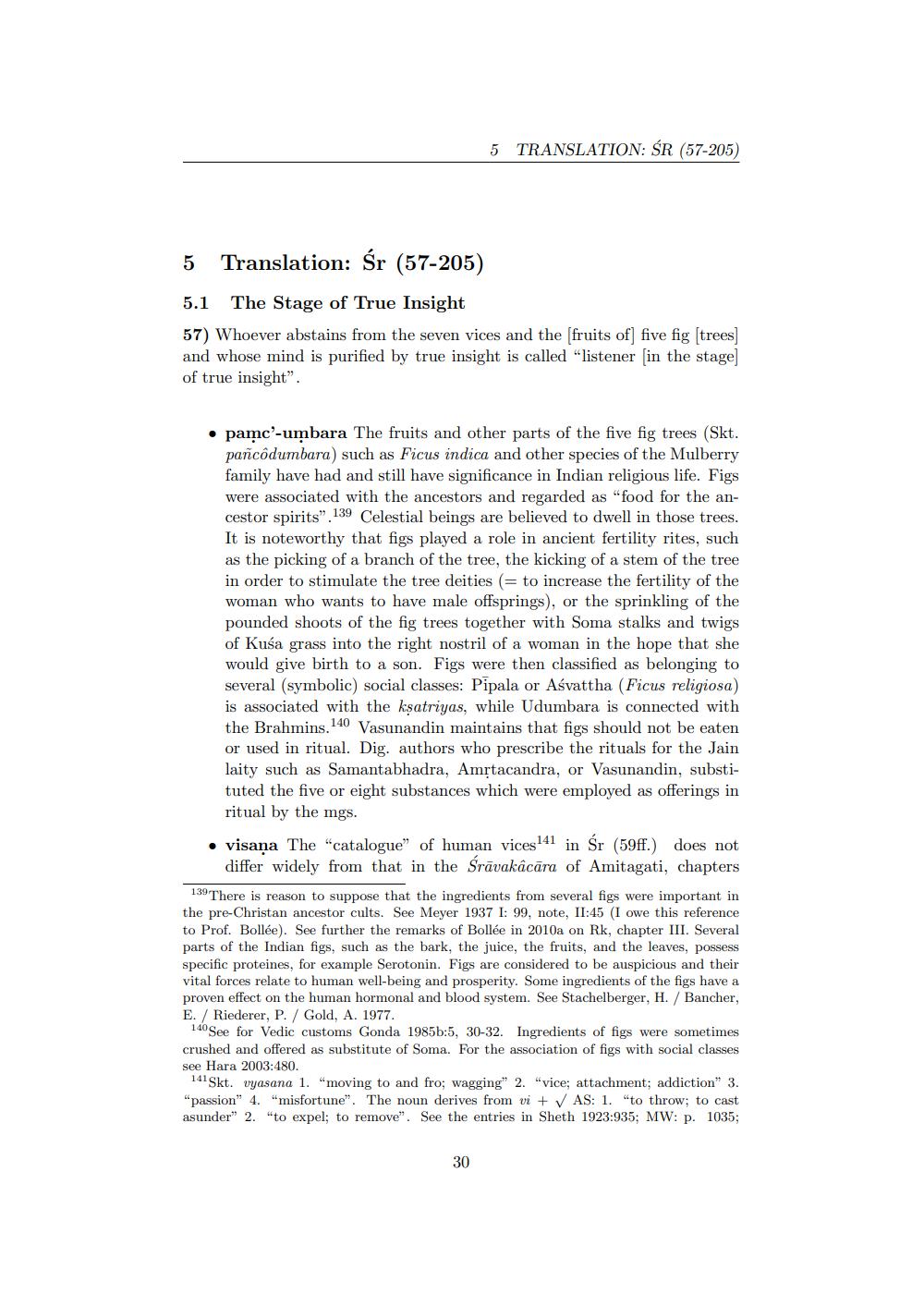________________
5 TRANSLATION: ŚR (57-205)
5
Translation: Śr (57-205)
5.1 The Stage of True Insight 57) Whoever abstains from the seven vices and the fruits of five fig trees and whose mind is purified by true insight is called "listener in the stage of true insight".
pamc-umbara The fruits and other parts of the five fig trees (Skt. pañcôdumbara) such as Ficus indica and other species of the Mulberry family have had and still have significance in Indian religious life. Figs were associated with the ancestors and regarded as "food for the ancestor spirits". 139 Celestial beings are believed to dwell in those trees. It is noteworthy that figs played a role in ancient fertility rites, such as the picking of a branch of the tree, the kicking of a stem of the tree in order to stimulate the tree deities (= to increase the fertility of the woman who wants to have male offsprings), or the sprinkling of the pounded shoots of the fig trees together with Soma stalks and twigs of Kuśa grass into the right nostril of a woman in the hope that she would give birth to a son. Figs were then classified as belonging to several (symbolic) social classes: Pipala or Asvattha (Ficus religiosa) is associated with the ksatriyas, while Udumbara is connected with the Brahmins. 140 Vasunandin maintains that figs should not be eaten or used in ritual. Dig. authors who prescribe the rituals for the Jain laity such as Samantabhadra, Amrtacandra, or Vasunandin, substituted the five or eight substances which were employed as offerings in
ritual by the mgs. • visana The "catalogue” of human vices141 in Sr (59ff.) does not
differ widely from that in the Srāvakâcāra of Amitagati, chapters 139 There is reason to suppose that the ingredients from several figs were important in the pre-Christan ancestor cults. See Meyer 1937 I: 99, note, II:45 (I owe this reference to Prof. Bollée). See further the remarks of Bollée in 2010a on Rk, chapter III. Several parts of the Indian figs, such as the bark, the juice, the fruits, and the leaves, possess specific proteines, for example Serotonin. Figs are considered to be auspicious and their vital forces relate to human well-being and prosperity. Some ingredients of the figs have a proven effect on the human hormonal and blood system. See Stachelberger, H. / Bancher, E. / Riederer, P. / Gold, A. 1977.
140 See for Vedic customs Gonda 1985b:5, 30-32. Ingredients of figs were sometimes crushed and offered as substitute of Soma. For the association of figs with social classes see Hara 2003:480.
141 Skt. vyasana 1. "moving to and fro; wagging“ 2. "vice; attachment; addiction" 3. "passion" 4. "misfortune”. The noun derives from vi + ✓ AS: 1. "to throw; to cast asunder" 2. "to expel; to remove". See the entries in Sheth 1923:935; MW: p. 1035;
30




